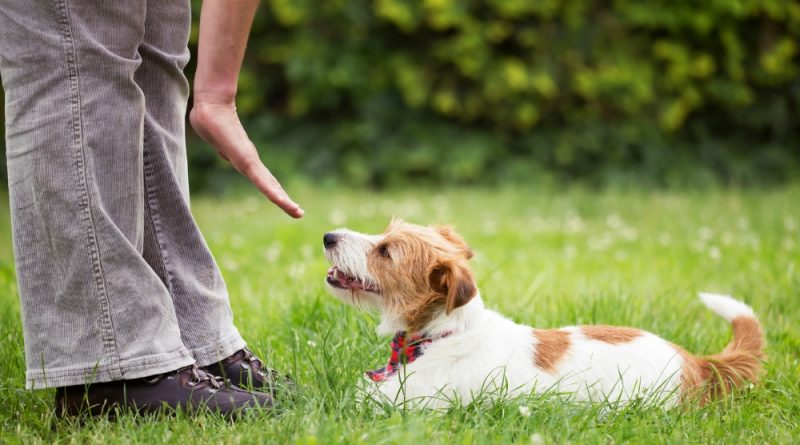How to choose a dog trainer
When it comes to dog training, many people may initially think of dogs performing cool tricks, such as spinning around, playing dead, engaging in sports activities, among other impressive tricks to “impress the family.” However, dog behavioral training, as the name suggests, is directly related to how the dog will behave in daily life in various situations: from a regular day at home to a stroll in the mall or even a visit to the veterinarian.
It is also common to think about educating a pet from the early days of life, but training is essential to correct inappropriate behaviors in already adult animals – such as older adopted dogs that need to adapt to a new environment and lifestyle.
Despite the tips available on the internet for teaching basic commands or getting the animal used to a transport crate, the work of a professional behavioral trainer is indispensable. It can significantly benefit the psychological health not only of the dog but also of the entire family, improving overall coexistence.
How to choose a good dog trainer
The first step in choosing a good behavioral trainer is to seek references, talk to other owners who are or have been clients of this professional. Knowing the trainer’s background, reputation, and how long they have been in the market is essential.
It is important to know the methods used by the trainer, be aware of where they learned, whether they took specialization courses, and which courses they took.
“It is essential to know that the profession is not regulated, so the owner should consider the professional’s experience. Despite various courses, dog training still adapts a lot from human psychology, combined with the professional’s knowledge about dogs,” explains behavioral trainer André Almeida.
The best methods
How to choose a trainer for your pet and be sure that it will learn the commands? Positive reinforcement is the most recommended by many animal behavior specialists. This method ensures that the dog will learn what the owner wants it to learn, and the trainer’s role is to teach the pet to obey – always within the limits of each individual, it is worth noting.
Everything is done through repetition and association; the trainer gives the command and then a reward that encourages the animal to obey repeatedly without feeling bored.
The rewards used do not always have to be treats (indeed, the owner can choose which treat to offer since they understand the pet’s preferences). Affection, play, and praise are also great motivators and make the dog feel happy after a job well done.
“Trainers usually start with food rewards, and after a few weeks, they alternate with verbal attention reinforcers, with affection and play. At the end of the training, some individuals may need positive punishers for control in dangerous environments or situations beyond the individual’s control during training, but the base done with reinforcers allows the pet to go through the situation without trauma,” says the trainer.
Submission or threats should never be used to make the animal follow an order. Making the dog feel fear during training is out of the question, as it can generate or worsen any traumas the animal may have from the past.
In general, positive reinforcement yields excellent results, and everything depends on how the trainer performs the work. It is necessary to balance the rewards since excessive use of positive reinforcement can merely shift the problem to another situation and not solve it effectively.
“Trainers with different ideologies have divided the class; many use only what looks good to human eyes, and this creates a great conflict in the dogs’ minds. Techniques with scientific foundations are very welcome, and the most well-known ones are positive reinforcement, negative reinforcement, positive punishment, and negative punishment. Many trainers have abandoned any type of punisher not to go against what owners think is good for the dog, which, most of the time, the dog does not understand,” explains André.
The different methods associated with behavior show the dog whether a particular behavior should be repeated or diminished.
How the trainer handles each case is important
Before answering how to choose a trainer, especially for behavioral corrections, it is indispensable for the trainer to show an interest in understanding the needs of that animal – if the same owner has more than one dog, it is interesting to know each one specifically.
“We usually say that the balanced trainer is the best professional. They know when to reinforce a behavior or punish another that should not be repeated, using the four quadrants correctly, and thus, we see the result appear,” says André.
A trainer using the same training formula for all animals may not be doing the best job; there is no unique recipe for this, and each animal takes a different time to learn.
André says that today there are many online courses that, for the most part, are based on theories and do not show practical results. “Some even have testimonials from specific cases, but they usually change when the reality of the dog in question is altered, and it may not give the expected result if applied to another family.”
The owner should observe throughout the training if there is any significant improvement in the pet’s behavior. However, just as the trainer should not set a deadline, the owner should not expect a miracle, and the problem will be resolved overnight.
Along with the owner, the trainer must establish the best strategy for the needs of that animal, which tends to yield results over the course of the lessons.
The relationship between pet, trainer, and owner
As important as the understanding between the owner and the behavioral trainer is the relationship between this professional and the main interested parties in the training: the dog.
It is recommended that the owner participate as much as possible in the pet’s training sessions, but not only to watch, they must actively participate. The trainer also needs to teach the owner how to continue everything the pet has been learning or, in the long run, all the effort will be in vain.
However, in the first sessions, the constant presence of the owner can hinder the learning of the animal. André explains that if the trainer does not agree to the owner staying present, it is not a sign that they are a bad professional.
“Usually, the professional explains everything that is happening in training, but the constant presence of the owner can distract the dog, and the trainer may ask them to step back. In these cases, the family can request the recording of the beginning of the training until they feel total confidence,” he advises.
The owner should also pay attention to the dog’s reaction every time it meets the trainer for a new lesson. If the dog is happy to see the trainer, it is a good sign that the work is being well done.
If you liked the article “How to choose a dog trainer,” we recommend sharing it with your friends so that everyone can make the best decision to keep their pet’s behavior obedient. However, it is worth emphasizing that, in addition to training, owners need to be aware to perpetuate the learned commands.




